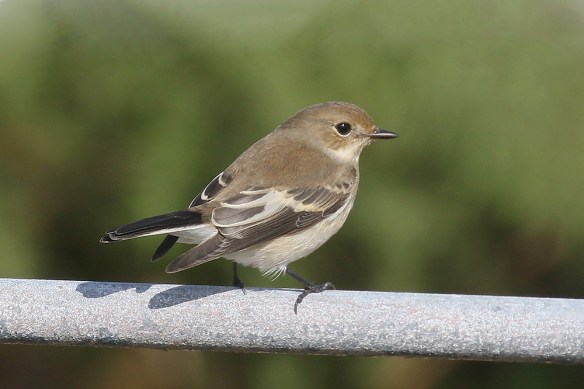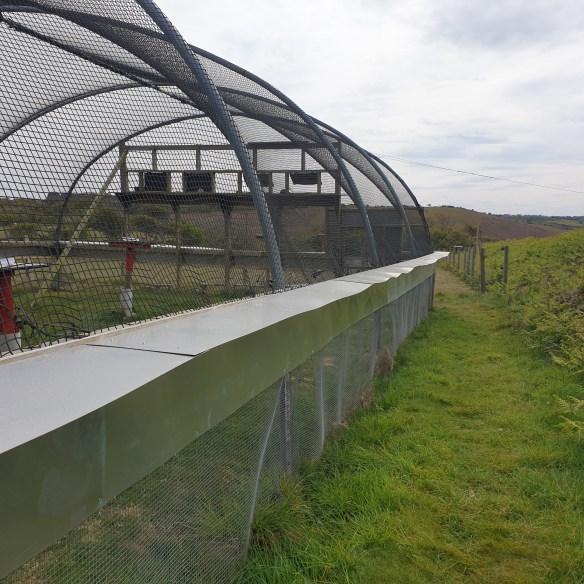 From The Conversation
From The Conversation
We’ve filled feeders with seeds and nuts since many of us were children and loved seeing which birds arrive. And, we’re not alone – around half of all UK households do the same nowadays, spending £250 million on 150,000 tonnes of bird food each year. That’s enough to feed three times the breeding populations of the ten commonest garden species if they ate nothing else all year, with one feeder for every nine birds that use them.
Have you ever wondered how all of that additional food might be affecting wild birds? How much has our generosity changed their natural diet, and what of the bird species we don’t see visiting garden feeders?
If you live in the UK and the Channel Islands, one garden visitor you’re probably used to seeing is the blue tit. Blue tits are small, fast and often feed high in trees on tiny insects. Seeing exactly what they eat is tough. But with new molecular technology, it has been possible to test blue tit faeces from 39 woodlands across Scotland – some close to houses, some on remote mountainsides and some by the sea – and gain a fascinating insight into their average diet.
What was found, came as a surprise. A small moth caterpillar (Argyresthia goedartella) that lives on birch trees was their most common natural prey item, present in a third of the faeces sampled. But among hundreds of species of insect prey, there was also garden bird food – and lots of it.
Peanuts were present in half of all the faeces – the most common food item for Scottish blue tits – and sunflower seeds in a fifth. And the birds weren’t just popping next door to find these garden treats. Some were travelling as much as 1.4km from remote areas to nibble on their favourite garden snacks. Clearly this has become part of their staple diet.
A blue tit bonanza
Eating the food we provide gives blue tits more energy to lay eggs – five days earlier than blue tits that don’t. These earlier breeders are likely to raise more healthy chicks. Eating bird food was also linked to a nearly four-fold increase in the proportion of adults available to breed in a given area. Where there used to be one pair of blue tits nesting, garden bird feeders nearby meant there was now likely to be almost four pairs sharing the same space.
Other woodland species such as great tits, nuthatches and great spotted woodpeckers that enjoy garden bird food are doing very well too. Their UK populations have increased on average over the last 25 years that bird feeding has really taken off.
All this feeding might be giving these species an unfair advantage. These species have natural competitors in the woods that aren’t using bird feeders as much or at all, either because they’re shy or because they’re bullied by more dominant species, or because they don’t like the food people provide. These species include the marsh tit, willow tit, pied flycatcher, wood warbler and lesser spotted woodpecker. What’s happening to them is, sadly, not such good news.
How to help all woodland birds
On average, woodland birds that don’t use garden bird feeders have declined over the past 25 years, some to the point where they have almost disappeared from the UK countryside. Nobody knows exactly why, and while this may be partly due to their habitat fragmenting and the climate warming, garden bird-feeding may have also played a role.
Due to people feeding them, there are now more dominant blue and great tits in the woods than 25 years ago, eating more of the limited natural food and evicting other species from their nests. There are also more great spotted woodpeckers and squirrels, which eat the chicks of some birds. Perhaps an extra 700,000 pairs of very healthy and dominant great tits in woodlands is too much for the UK’s remaining 2,000 pairs of shy and subordinate willow tits.
While results suggest there’s a link between how much woodland birds visit feeders and their population trends, they don’t show a direct cause, so we shouldn’t panic yet. While scientists study this problem, responsible bird lovers can help.
Consider contributing to the garden bird surveys organised by the RSPB, British Trust for Ornithology and Action for Wildlife Jersey/Birds On The Edge to help scientists keep track of where birds are, in what numbers and what they’re doing. If you’re lucky enough to live where rare woodland bird species can still be found, consider providing less bird food to common species and cleaning your feeders regularly.
Meanwhile, there are more natural ways to encourage wild birds into your garden. Planting native shrubs and trees like rowan, hawthorn, silver birch, spindle and guelder rose is one option. They are all beautiful year-round, fairly small and provide excellent habitats for wild birds. Other ideas include mowing lawns less often and digging ponds.
As some rare species nest close to the ground, please keep dogs on leads while walking in woodlands during the spring too. But most importantly, keep enjoying these beautiful birds – in all their miraculous diversity.
Further reading:
Faecal metabarcoding reveals pervasive long-distance impacts of garden bird feeding
A national scale inventory of resource provision for biodiversity within domestic gardens
Wild bird feeding in an urban area: intensity, economics and numbers of individuals supported



















































